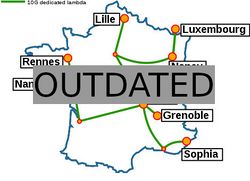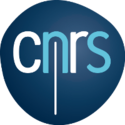Grid5000:Home: Difference between revisions
No edit summary |
No edit summary |
||
| Line 7: | Line 7: | ||
Key features: | Key features: | ||
* provides '''access to a large amount of resources''': | * provides '''access to a large amount of resources''': 15000 cores, 800 compute-nodes grouped in homogeneous clusters, and featuring various technologies: GPU, SSD, NVMe, 10G and 25G Ethernet, Infiniband, Omni-Path | ||
* '''highly reconfigurable and controllable''': researchers can experiment with a fully customized software stack thanks to bare-metal deployment features, and can isolate their experiment at the networking layer | * '''highly reconfigurable and controllable''': researchers can experiment with a fully customized software stack thanks to bare-metal deployment features, and can isolate their experiment at the networking layer | ||
* '''advanced monitoring and measurement features for traces collection of networking and power consumption''', providing a deep understanding of experiments | * '''advanced monitoring and measurement features for traces collection of networking and power consumption''', providing a deep understanding of experiments | ||
Revision as of 21:53, 19 January 2020
|
Grid'5000 is a large-scale and flexible testbed for experiment-driven research in all areas of computer science, with a focus on parallel and distributed computing including Cloud, HPC and Big Data and AI. Key features:
Grid'5000 is merging with FIT to build the SILECS Infrastructure for Large-scale Experimental Computer Science. Read an Introduction to SILECS (April 2018)
Older documents:
|
Random pick of publications
Five random publications that benefited from Grid'5000 (at least 2777 overall):
- Ophélie Renaud, Karol Desnos, Erwan Raffin, Jean-François Nezan. Multicore and Network Topology Codesign for Pareto-Optimal Multinode Architecture. EUSIPCO, EURASIP, Aug 2024, Lyon, France. pp.701-705, 10.23919/EUSIPCO63174.2024.10715023. hal-04608249 view on HAL pdf
- Barbara Gendron, Gaël Guibon. SEC : contexte émotionnel phrastique intégré pour la reconnaissance émotionnelle efficiente dans la conversation. 35èmes Journées d'Études sur la Parole (JEP 2024) 31ème Conférence sur le Traitement Automatique des Langues Naturelles (TALN 2024) 26ème Rencontre des Étudiants Chercheurs en Informatique pour le Traitement Automatique des Langues (RECITAL 2024), Jul 2024, Toulouse, France. pp.219-233. hal-04623019 view on HAL pdf
- François Portier, Lionel Truquet, Ikko Yamane. Nearest Neighbor Sampling for Covariate Shift Adaptation. 2024. hal-04645530 view on HAL pdf
- William Soto, Yannick Parmentier, Claire Gardent. Phylogeny-Inspired Soft Prompts For Data-to-Text Generation in Low-Resource Languages. IJCNLP-AACL 2023: The 13th International Joint Conference on Natural Language Processing and the 3rd Conference of the Asia-Pacific Chapter of the Association for Computational Linguistics, ACL, Nov 2023, Bali, Indonesia. hal-04199557v2 view on HAL pdf
- Lucas Leandro Nesi. Strategies for Distributing Task-Based Applications on Heterogeneous Platforms. Distributed, Parallel, and Cluster Computing cs.DC. Université Grenoble Alpes 2020-..; Universidade Federal do Rio Grande do Sul (Porto Alegre, Brésil), 2023. English. NNT : 2023GRALM048. tel-04468314 view on HAL pdf
Latest news
Failed to load RSS feed from https://www.grid5000.fr/mediawiki/index.php?title=News&action=feed&feed=atom: Error parsing XML for RSS
Grid'5000 sites
Current funding
As from June 2008, Inria is the main contributor to Grid'5000 funding.
INRIA |
CNRS |
UniversitiesUniversité Grenoble Alpes, Grenoble INP |
Regional councilsAquitaine |


